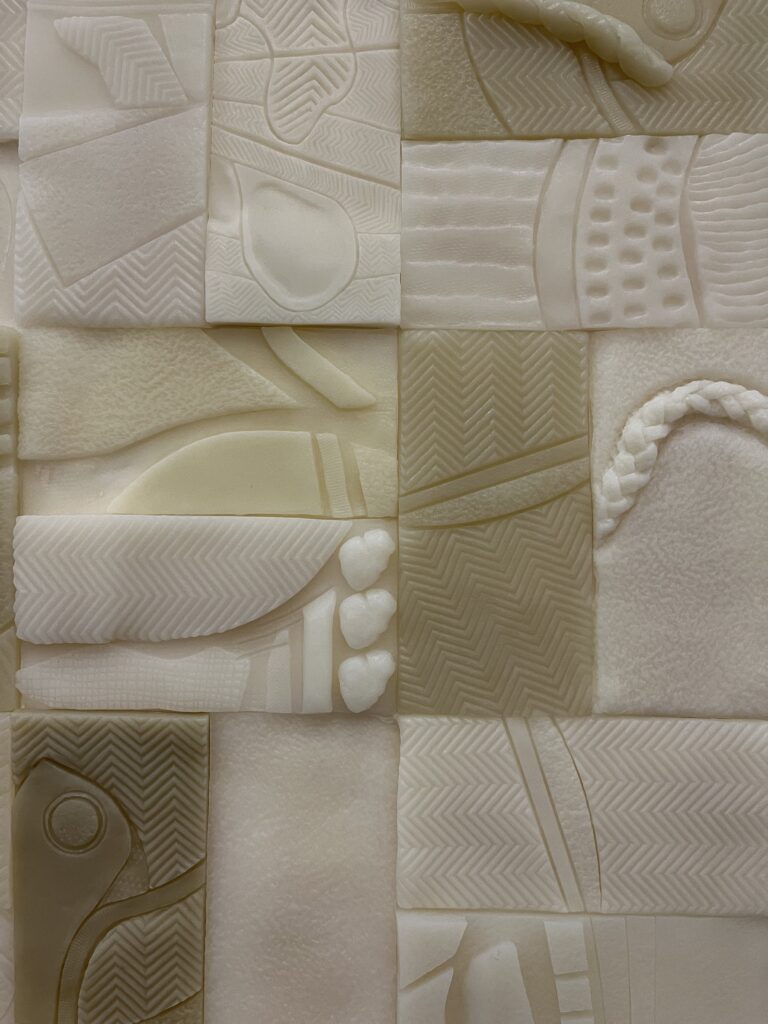If you’re ever in the town of Water Mill, New York, promise me you’ll visit the Parrish Art Museum. I happened to come across it on a recent business trip to The Hamptons, and it would be a crime for me not to share this absolute gem.
From any approach, it’s certainly one of most beautifully-designed galleries I have seen. It sits serenely amid a 14-acre landscape whose form and quality of light that has been attracting artists for generations. The natural beauty of sun, nearby ocean, big blue skies, and the golden tones of sand and grasses are reflected in the exterior and grounds. Thoughtful placement maximizes light and views, paying respect to the local architectural legacy of farms, barns and home that use their environment to enhance functionality.
The exterior has the low-slung profile of the potato barns that long doubled as artist workspaces in this part of the world. An aerial view reveals a roof-line that makes me think of an ebbing wave. Look at the building at a distance from the adjacent meadow gardens, and the soft grasses and natural tones might remind you of looking at the sea through feathery sand dunes.
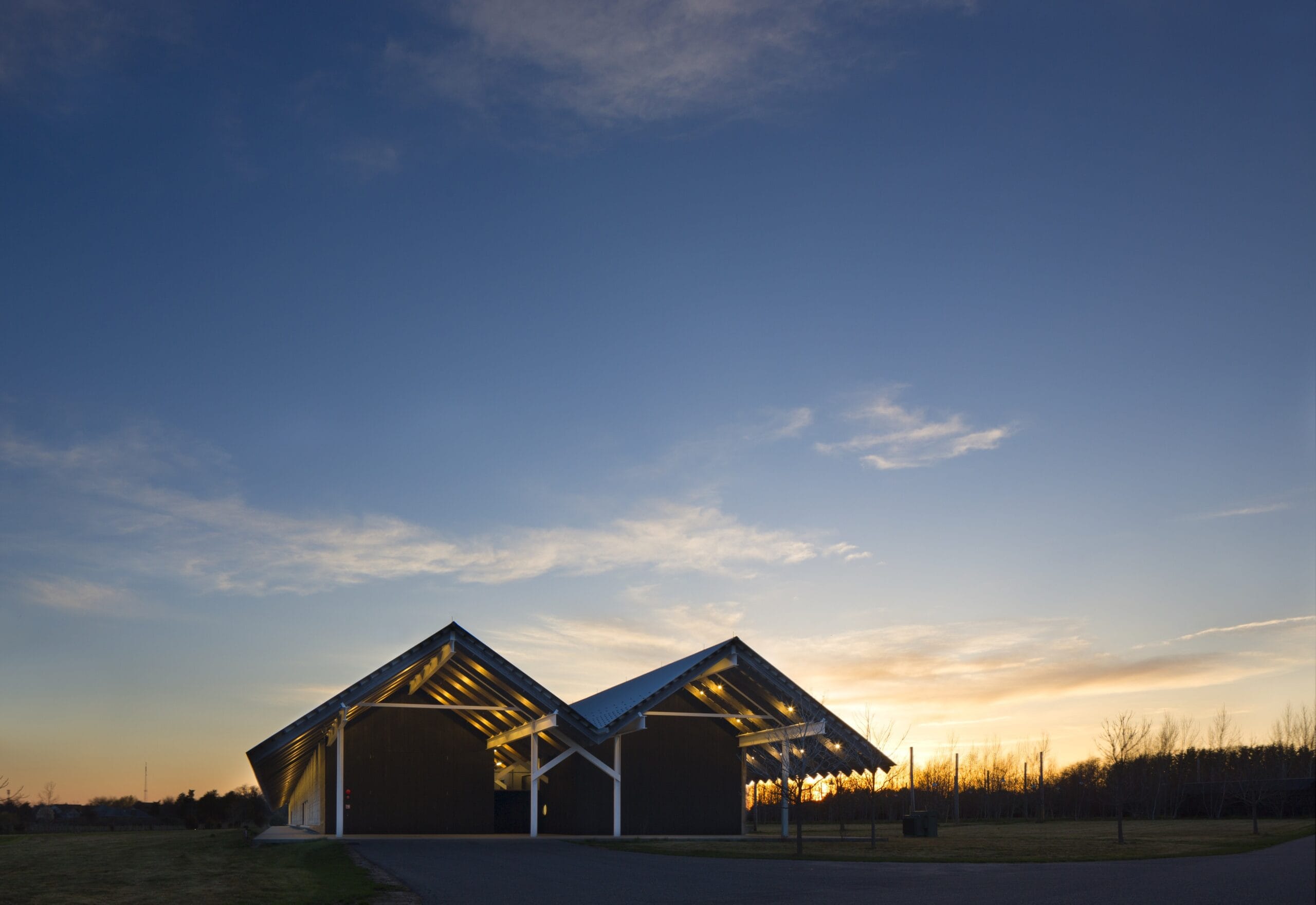


Large outdoor sculptures and installations dot the grounds, but they too seem almost to have grown on site—even the multifaceted mirrored boat shape that bounces light everywhere doesn’t seem out of place.
The building consists of two parallel wings joined by a central spine that runs the full length of the building. Poured-in-place concrete walls are recessed under an elegant white corrugated metal roof that extends over porches, as well as a 6,000 square-foot terrace that looks like it would be a wonderful event space. Traditional lighting is used in the two central galleries to protect works on paper. Natural wood from 200-year-old pine salvaged from a demolished Virginia textile mill ties the interior spaces together.
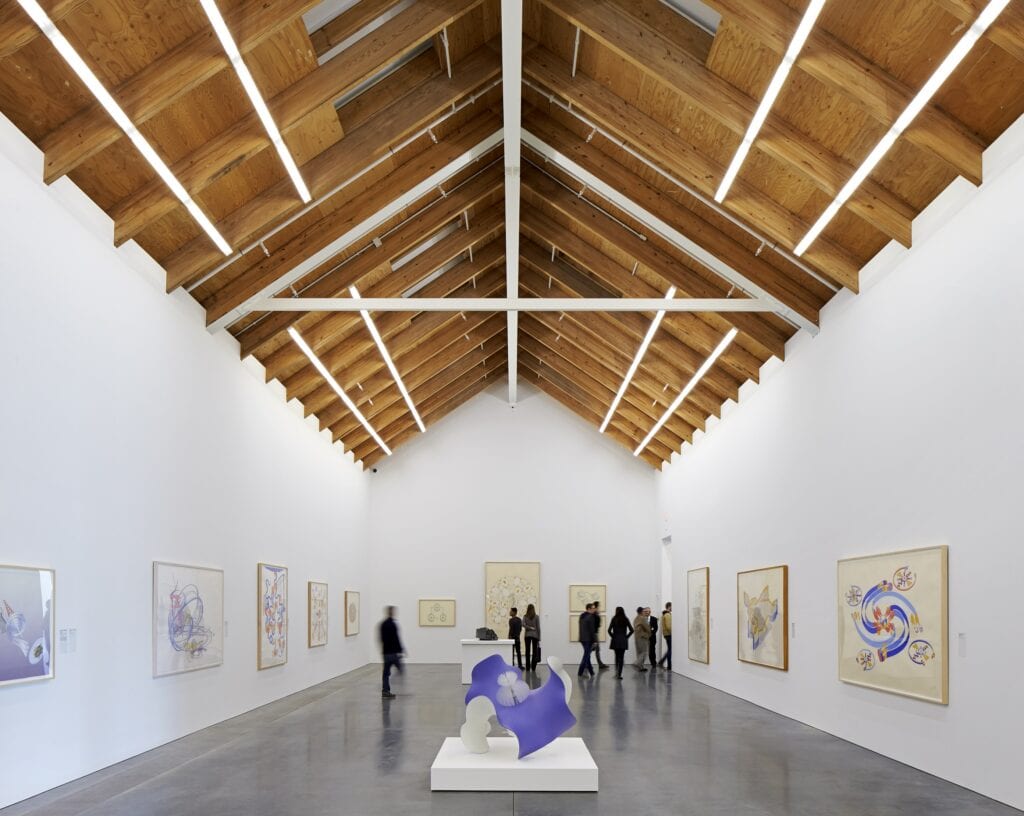
Inside, the gallery’s 12,200 square feet of exhibition space houses work from a permanent collection of 3,000 pieces-ranging from early nineteenth-century landscapes to works by contemporary artists. Artists I discovered for the first time included Pamela Council, an interdisciplinary artist who uses sculpture, print, performance, and writing to create multi-sensory “tributes”.
I was fascinated by a piece from her Relief Series, which was done between 2017 and 2020, and which was part of the museum’s Another Justice exhibit.
For it, she used silicone tiles based on classic court sneaker outsole samples from the archives of Reebok’s factory on a wood panel, (shown at right) are both beautifully textured and subtly toned.
They’re also a reflection of Council’s self-named BLAXIDERMY, a colorful, Afro-Americana camp aesthetic that Council says “serves as a skin for cultural and metaphysical inquiries that unpack the precarity of Black life.”
Last year, she presented a Fountain for Survivors, embellished with a mosaic of acrylic fingernails, an enormous cocoon structure, and a tiered water fountain- her largest public artwork to date,
Also delighted to discover Zoë Buckman, whose detailed, delicate embroidered works seek to bring joy to a world marked by trauma, and violence, especially towards women.
Here’s a list of upcoming exhibits.
The site position and generous windows lets in natural north light, and glass in north and south walls afford floor-through views into the museum and beyond. The Parrish Art Museum is one of the few American galleries that shows work in natural light.

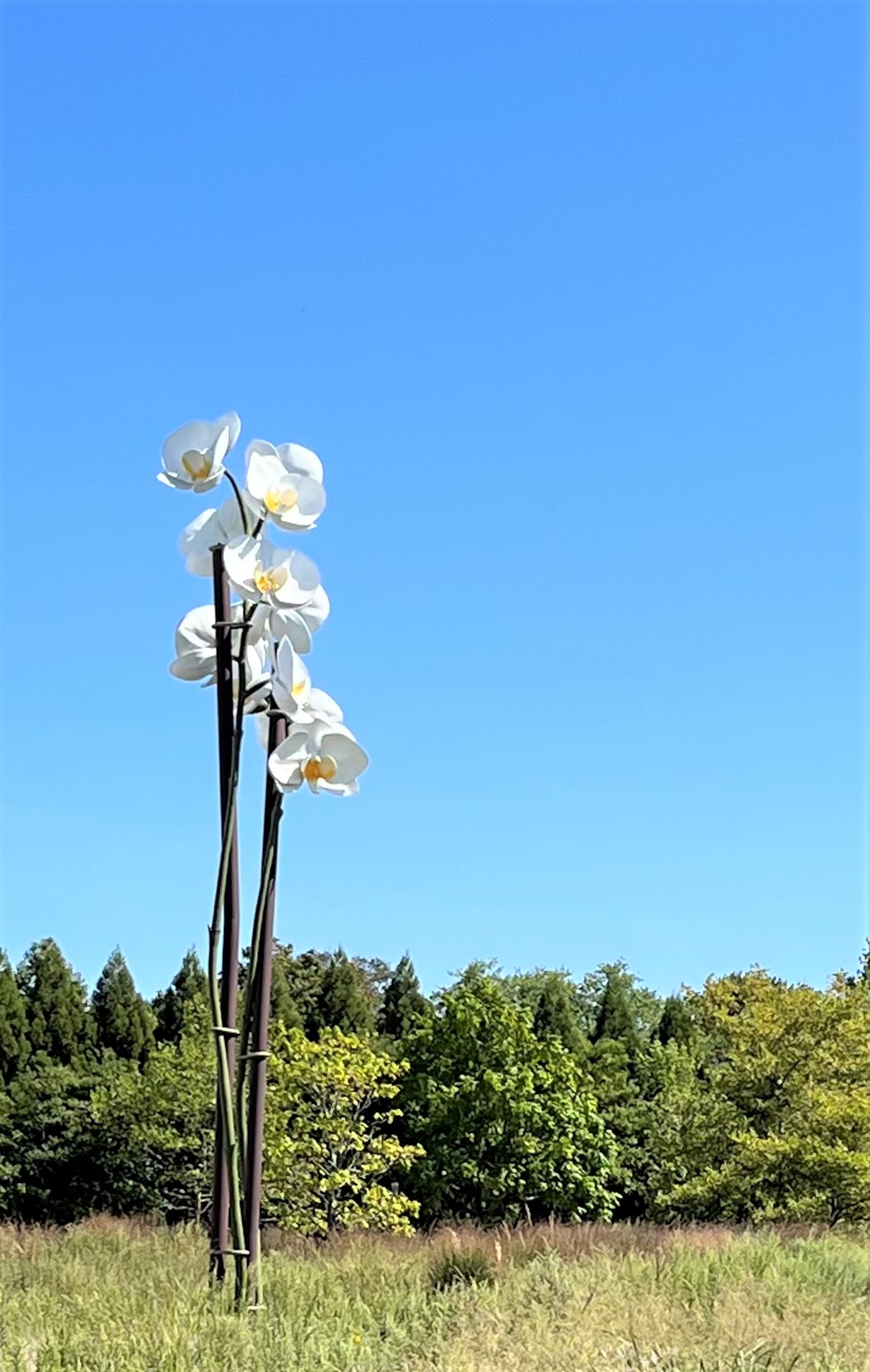
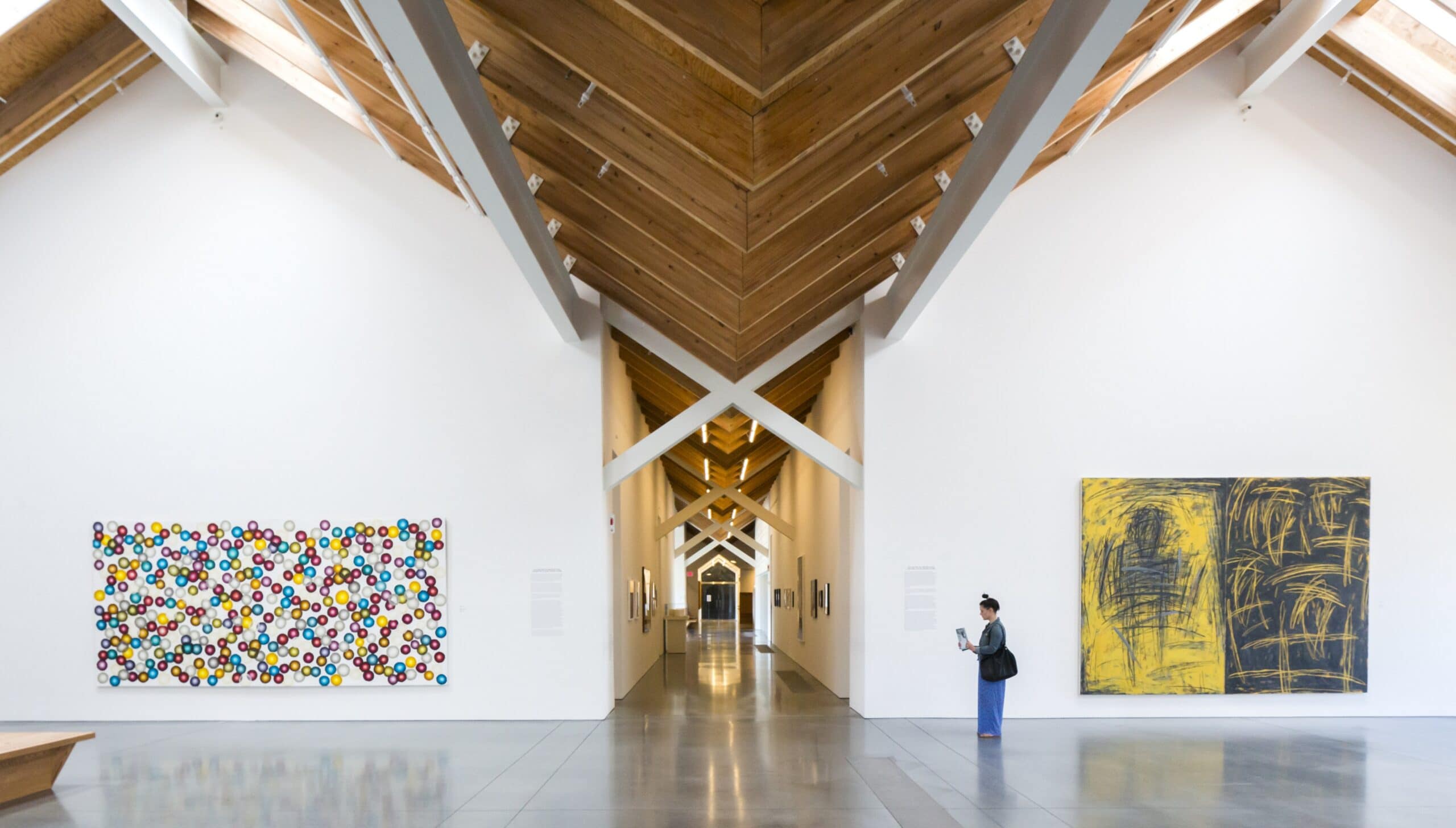
An ordered sequence of post, beam and truss defines the unifying backbone of the building. Its materialization is a direct expression of readily accessible building materials and local construction methods.
Designed by Reed Hilderbrand Associates, the site for the art museum has been reshaped into expansive meadows that gently frame the building. Grasses and native wildflowers at the south of the site rise toward an oak and evergreen hedgerow at the northern boundary, where low trees delineate a maturing woodland canopy at the parking area. Planted Swales absorb storm water runoff as part of a site-wide land stewardship strategy.

Both the building and site mimic the elements that define the region, using the play of light and stressing an open sky.”
Reed Hilderbrand Landscape Architecture


